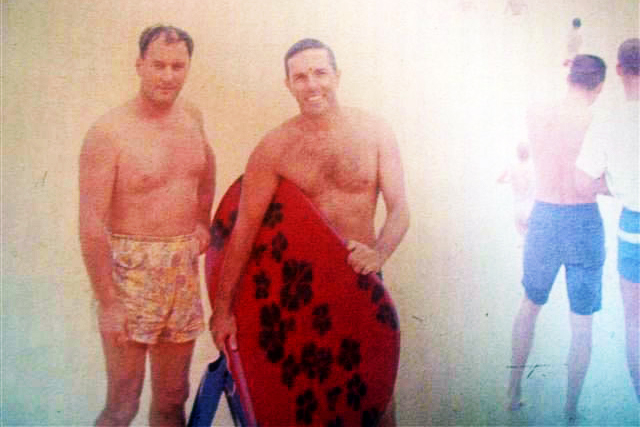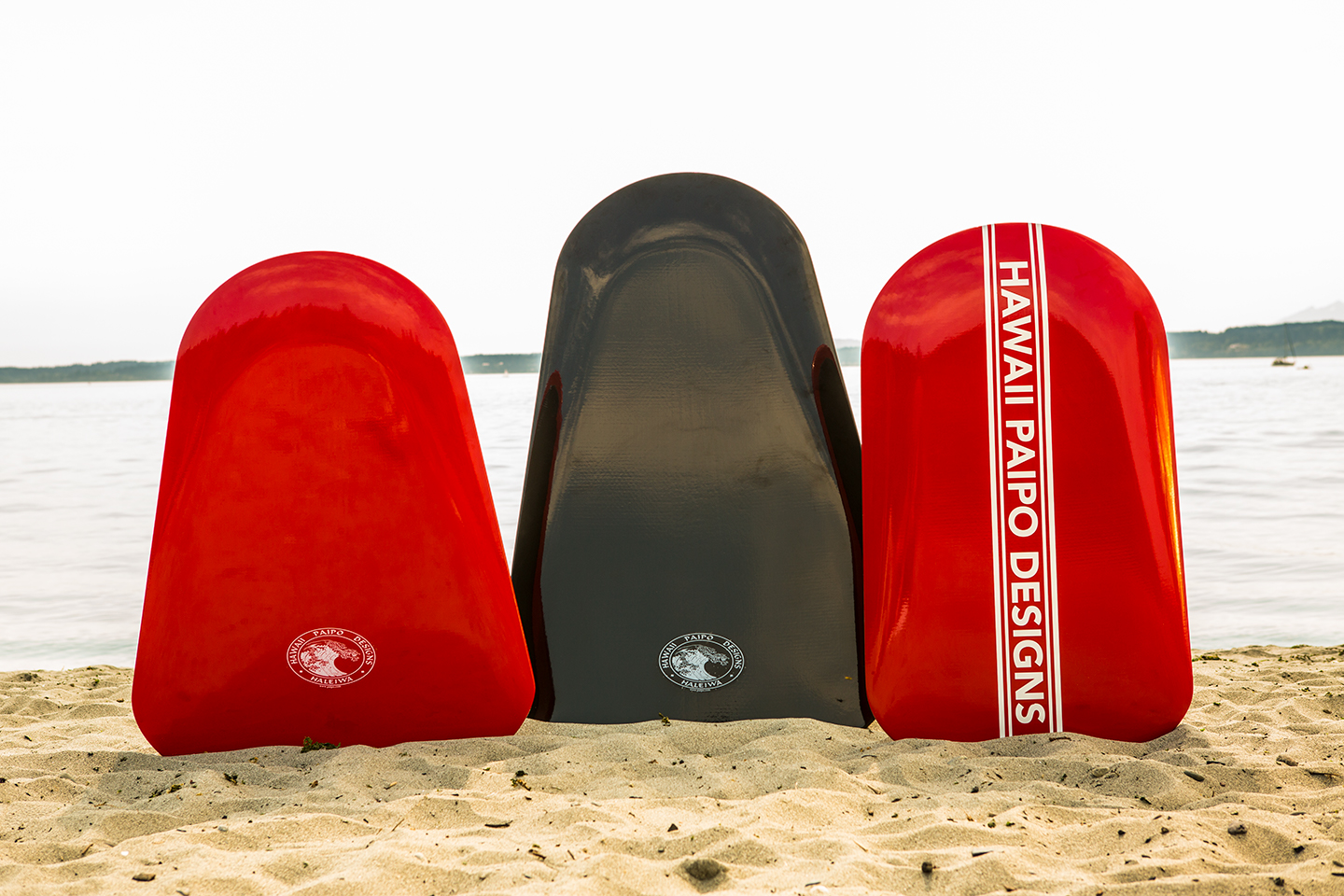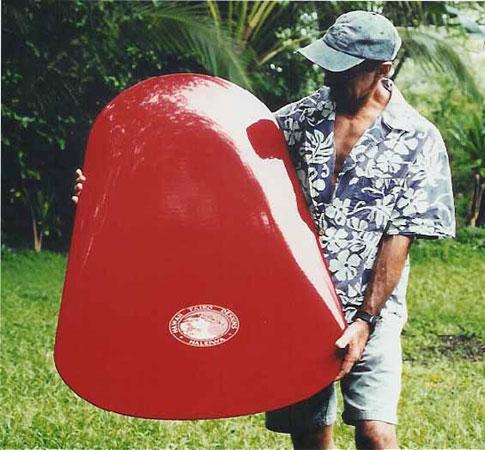Talking Story with Paul Lindbergh

The Early Days
It all started in Honolulu in the early 1960’s. As a teenager, I had moved from Brooklyn, New York and was just getting settled down in my new island life. Back in those days, the only thing kids did was surf. We would ditch class and head to the beach with our hand-made paipo boards and surf until the sun went down.
Oahu was a much different place back then. Going to the North Shore was an adventure that would take two and a half hours each way by car over narrow winding roads through the steep mountains and lush Hawaiian jungle. Ehukai was our spot, and was the paipo spot back in those days. We’d bodyboard and bodysurf ’till it got dark or we got hungry.
Back in those days practically everybody was making their own boards to ride out of plywood, carved Koa wood, even the food trays from the McDonald’s on the way to the beach. We took so many trays that they banned us from entering, but that still didn’t stop us.
I had seen a guy by the name of John Waidelich riding a guitar pick paipo and was interested in building my own modified version. In Mr. Murakami’s shop class at Roosevelt High School in Honolulu, I began experimenting with the guitar pick shape looking for the right design and foiling to produce the one thing I was most addicted to: speed. The result was a beautiful carved koa wood paipo that turned heads both in the parking lot and on a wave. When I’d take it out to the beach, people would flag me over to ask what kind of board it was and how it was going so fast.

"The board was like a rocket ship. People would flag me down and ask what the hell I was riding."
Where did all the Paipos go?
In 1971, the Morey Boogieboard was invented. In no time, the paipos had been overrun by foam-core boogieboards on the North Shore. Everybody had a Morey Boogieboard, and they were being mass-produced on a scale no one had ever seen before.
I remember the boogieboard craze started as a massive fad. We would all stare at the closed-cell foam, thinking how cool it was. We rode them for a while, before we eventually realized that they weren’t really all that good for serious surf.
After returning from the Army, I met up with a longtime friend and Lifeguard at Ehukai, Sean Ross. We were talking about how all the paipos had vanished, and how much fun it was riding them back in the sixties. We came up with the idea of re-inventing the old solid carved paipos with pressed plywood that would be easier to produce, and way better than a foam-core “sponge” as we called them.

The press that we used to make these laminate boards was made from solid reinforced concrete, and weighed around 2,000 lbs. Sean and I built the press in the middle of the living room of the apartment I was staying in at the time. We would load the veneer and plywood along with epoxy into the press, then close the giant cement lid and tighten 40 bolts with an impact wrench. The board would sit and “bake” in the press for a day, before opening the lid and prying the board out.
I was up and running again, making beautiful boards out of the press. People really liked these pressed boards, and man were they fast. Before long they began popping up at North Shore beaches, just like the old days. The pressed boards were definitely faster than carving them, but they still took about a week to finalize the boards. The press would leave a ribbon of extra material around the edge that would need to be cut off. Finding exactly where that edge fell was different for each board, and was very difficult to get it perfect due to the very complex curvature of the board.

I made these boards as a side job during the seventies while doing all sorts of day jobs like playing flute and saxophone, diving, and fishing. I had to move houses a couple times, and as you could imagine, moving a 2,000 lbs cement press all around town is just not fun. After making these boards for about 10 years, I had to move again and just could not bring the giant press with me.
By the late eighties, I was working quite a bit as a musician and diver. I lived on the east coast for a little while and studied at Berklee College of Music, before moving back to the islands to play music and play in the ocean. Eventually, I would move to a nice little house outside Hilo, on the Big Island of Hawaii.
I was very excited to have enough space to build my own shop. At one point over the years I had made a fiberglass mold from the original wooden board from the sixties. I stashed this mold away at my mom’s house for over 10 years during my travels. While gazing around, wondering what my next gig was going to be, my eyes landed on the fiberglass mold I made, and I got the hunger all over again. That addiction to speed, an urge I had buried for over 10 years suddenly resurfaced, driving me to develop new paipos made from fiberglass.

The Fiberglass Era
At first, it took some time to get used shaping the fiberglass. I had worked with fiberglass quite extensively in the past, building and repairing boats and such. But the shape of my paipos was very difficult to master.
In order for these boards to turn out absolutely perfect, I needed to invent a new way of producing molded fiberglass.
After a few months of trial and error, the very first fiberglass clone of the wooden boards was born. This fiberglass board was lighter, faster, and much more durable than the older wooden boards. It was also faster to produce, and the results were much more consistent and they looked absolutely stunning.
Pretty soon, all of the prominent North Shore riders wanted an HPD Paipo. During the nineties, many of the North Shore lifeguards had one of our paipos at their lifeguard tower.

In the early 2000’s, I met Aaron Dressler, a fellow saxophonist and tech guru who has helped transition my small paipo shop into the technological age. Between the two of us, we keep HPD running, and keep the passion and love for the ocean going.
Over the years, much has changed around us, while our design and mantra has very much stayed the same. We are still just a small fiberglass shaping shop, now located outside Hilo, on the Big Island of Hawaii. Each board is hand-made, one by one, with care and love by Paul Lindbergh, just as they were in the 1960’s.
After 50 years dedicated to living and playing in the ocean, the spirit of the original Paipos carries on as strong as ever. In addition to the classic Paipo XL design, we added 3 variations to suit different body types and riding styles.
Looking to the future, we are experimenting with new laminate and veneer technologies, as well as environmentally safe products to reduce our pollution and carbon impact on the planet and oceans we love so much. We are exited with what the future can bring, and hope to continue producing these beloved paipos and carrying the spirit of the ancient paipo boards for another 50 years.